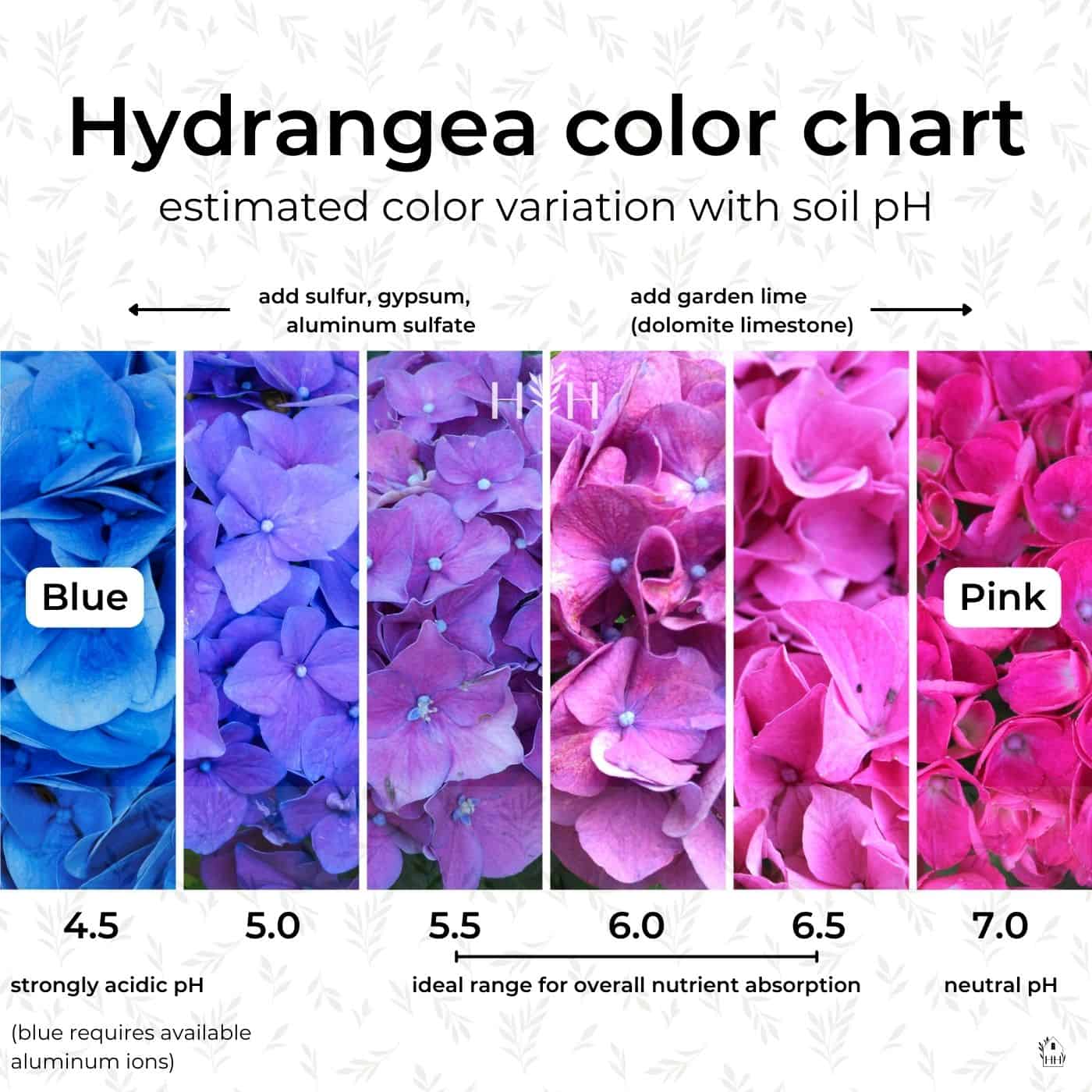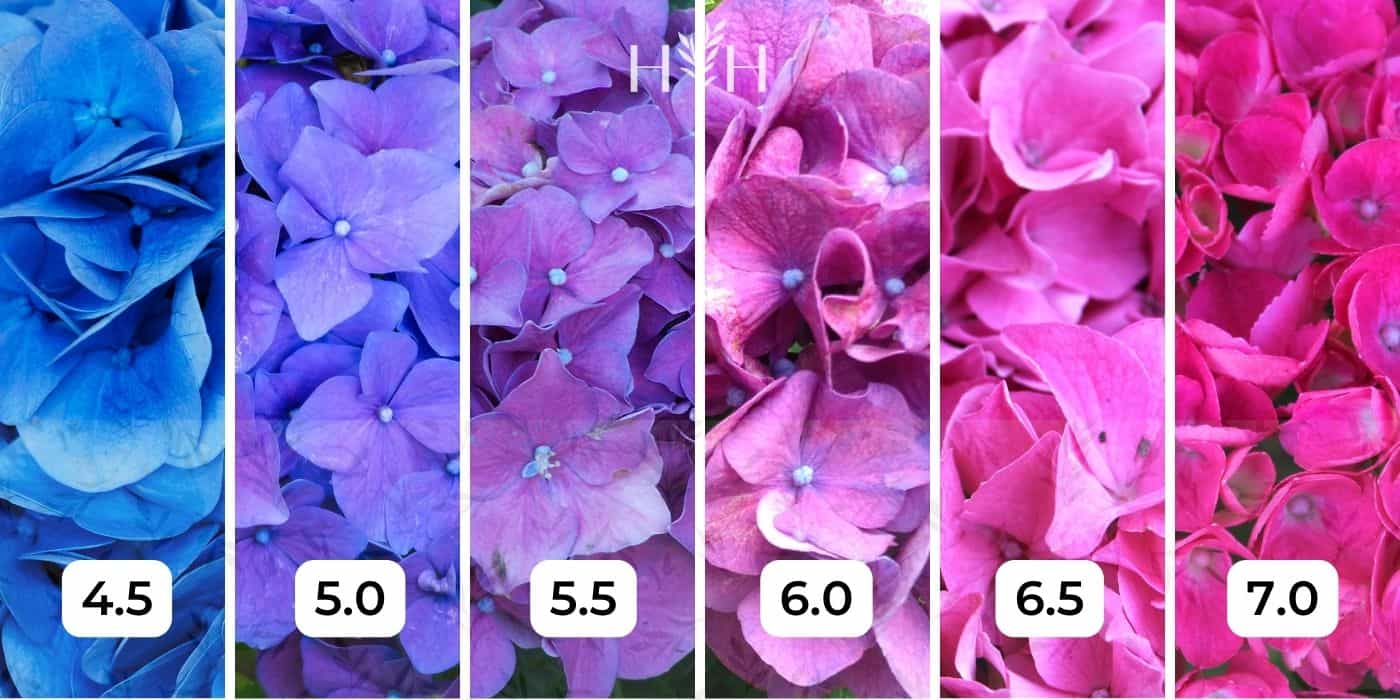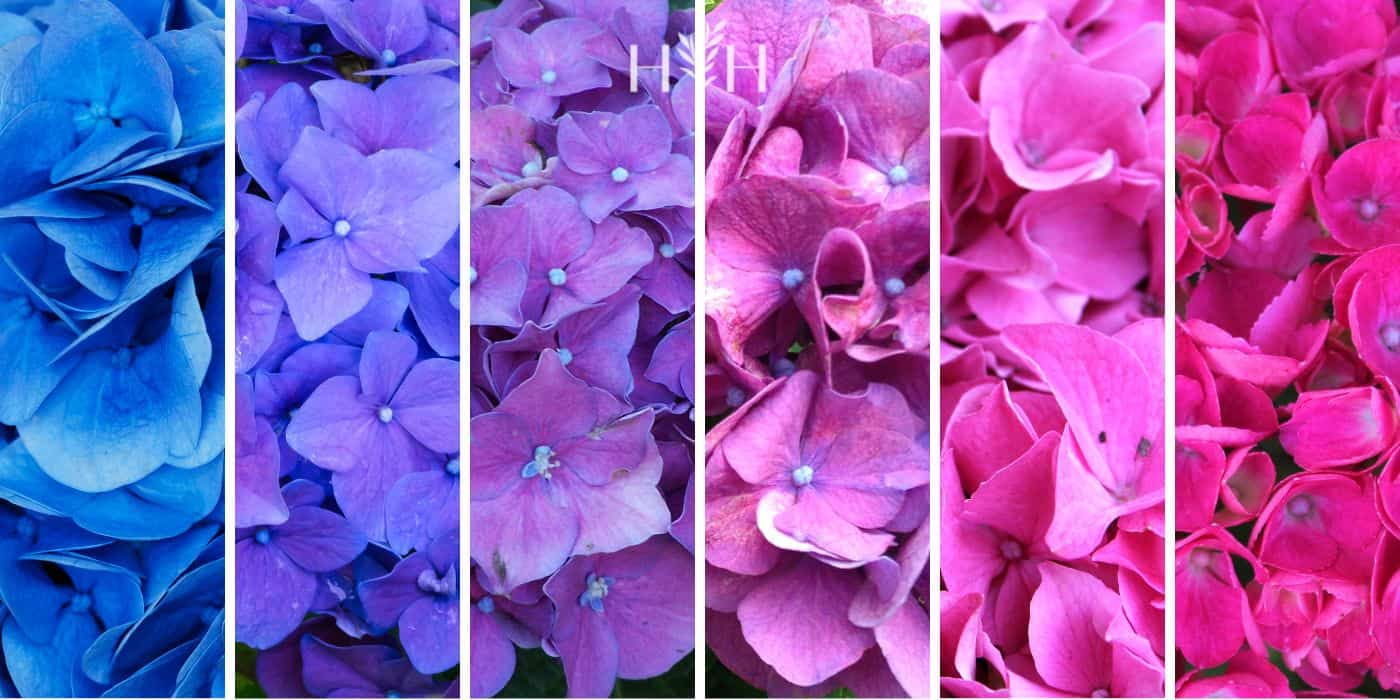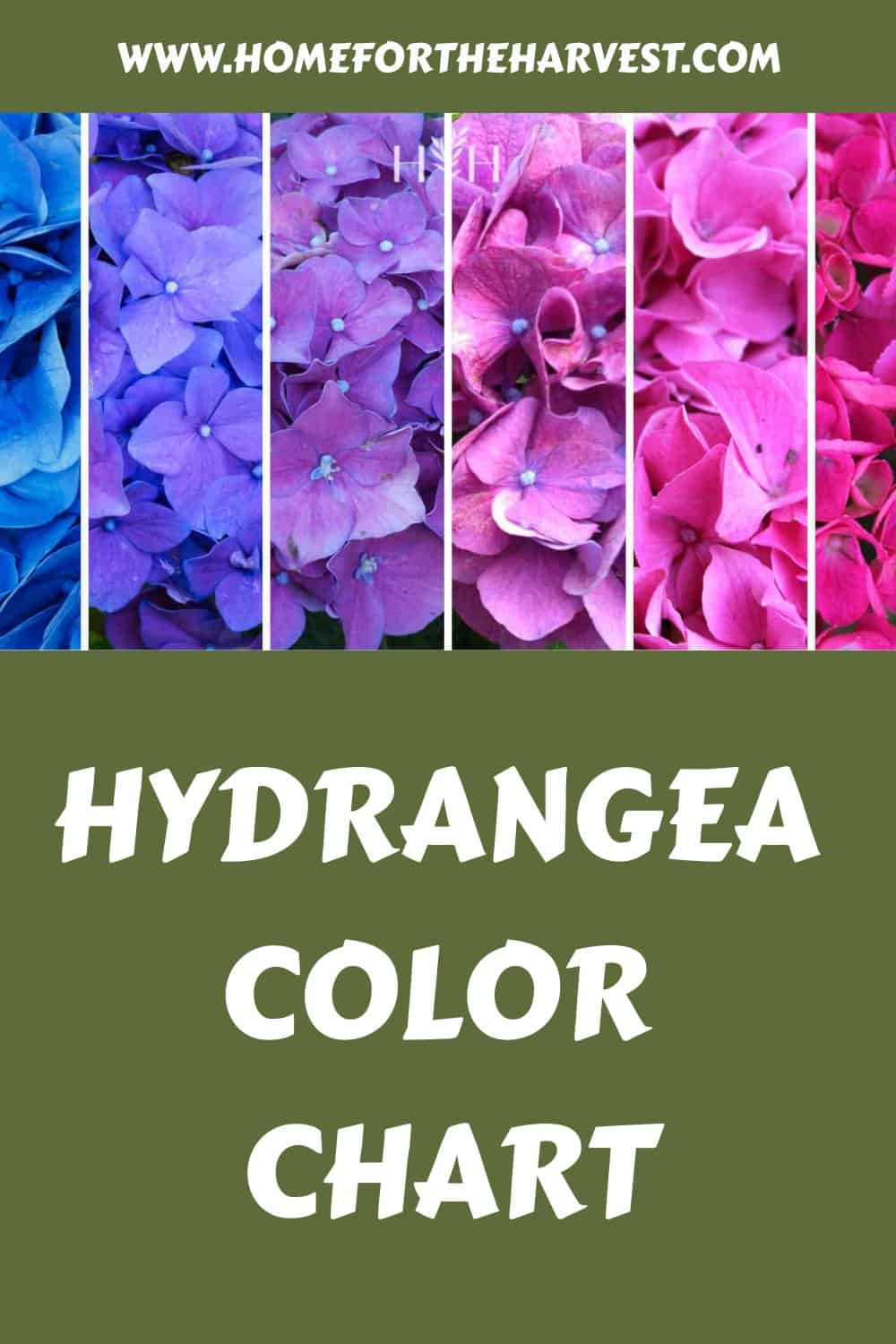This hydrangea color chart is useful for changing your plant’s flowers to blue, pink, or purple. See the image below for the range of colors that Hydrangea macrophylla flowers tend to turn with various soil pH levels and tips on adjusting the pH towards the desired color.
Hydrangea color chart
The hydrangea color chart below shows the estimated flower color as it varies by soil pH level. Soil with a pH under about 5.5 will tend to result in blue hydrangea blooms, while a pH above 6.5 will create more of a pink color. Flowers tend to be purple in the soil pH range of 5.5-6.5, which is ideal for overall nutrient absorption.

The color of hydrangea flowers depends mainly upon the availability of aluminum within the flower petals. When aluminum is available and mobile, the flowers tend to turn blue. Aluminum tends to be most available in acidic soils, while it is immobile in alkaline soils.
The pH levels listed above refer to the pH of the soil, not of the flowers themselves. The petal cell pH remains relatively constant for both pink and blue hydrangea flower petals.
Types of hydrangeas that can change colors
Of the half-dozen popular species of garden hydrangea, only two species have flowers that change color depending on soil conditions. Most varieties that can change color are cultivars of species Hydrangea macrophylla, with some Hydrangea serrata cultivars also able to change hue.

How to change hydrangea flower color
To change a hydrangea’s flower color, start by testing to get a baseline value and then adjusting the soil pH. A soil test can also provide insight into potential nutrient deficiencies.
Here is a guide for soil pH levels in relation to estimated hydrangea flower color:
- Blue flowers: pH of 4.5 – 5.5 (certain nutrient availability is low below about 5.0 pH)
- Purple flowers: pH of 5.5 – 6.5 (ideal for the health of the plant)
- Pink flowers: pH of 6.5-7.5 (certain nutrient availability is low above about 7.5 pH)
Note that it is not the pH of the soil itself that changes the petal color but the effect the pH has on soil minerals and the molecules that can be formed. Aluminum ions must be present in the soil and must be in an available form to create a mobile chemical complex that the roots can absorb and transport up to the flower heads.
For blue hydrangea flowers
To achieve deep blue-hued blooms, the pH level of the soil should ideally be around 5.0 or lower for optimal vibrancy. This may not always offer the best nutrition and health to your flowers, so use caution when lowering the pH of the soil and observe the effect on the whole plant.
If you want hydrangea flowers to turn blue, add aluminum sulfate or elemental sulfur to the soil. There are several pre-mixed soil acidifier formulas that can be used. Many contain sulfur, gypsum, and or aluminum sulfate. Gardeners need to be careful when adding aluminum sulfate, as too high levels can poison the plant.
Apply the soil acidifier in the early spring as the soil warms. While the concentrations vary between products, most slow-release dry formulations have an application rate of about 2 cups per plant, applied to the soil around the drip line. Most products can be applied every two months. It often takes one or two growing seasons for the desired color to appear in hydrangea blossoms.
Apply soil acidifier until the pH is brought down to 5.5 or lower. You’ll also want to ensure aluminum is present in the soil. This is why aluminum sulfate is a common blueing product for hydrangeas, even though it can be toxic at high levels. Additionally, avoid high phosphorus fertilizers as phosphorus can react with aluminum and render it immobile to the plant.
Turning flowers blue is easiest if the cultivar of hydrangea you’ve picked is amenable to bluing. Typical blue hydrangea varieties like ‘Nikko Blue’ can release citric acid easily, which makes it easier for them to draw up the aluminum ions into the plant. Varieties that tend to flower pink or purple (even at low acidities), such as ‘Summer Crush,’ may not be able to emit enough citric acid to create a deep blue even though the plants are of the same hydrangea species.
For pink hydrangea flowers
For bright pink flowers, the pH of the soil should be about 6.5 or higher. This is near the neutral pH level of 7.0 on the scale. Gardeners in alkaline soil almost always have pink flowers.
For pink flowers, bring the soil pH up by adding garden lime (dolomite limestone) to the soil. While product concentrations vary, most formulations can be applied at a rate of about 1/4 cup per plant. Alkaline-promoting amendments can usually be applied in early spring, late spring, and early fall.
The science behind changing the color of hydrangeas
Hydrangea color varies with soil pH because soil pH affects the availability of aluminum ions in the soil. Soil pH itself may not be the main factor influencing petal coloration, yet it nevertheless serves as a reliable indication of the availability of aluminum ions and the resulting petal color. The soil must contain adequate aluminum, and it must be in a mobile form that the roots can absorb.
In acidic soil, aluminum ions are mobile. The ions can react with other molecules and be absorbed by the roots and transported up to the flowers. The aluminum has a bluing effect on the pink hues in the flower, turning the petals to a blue tone.
In neutral to alkaline soil, however, aluminum ions combine with hydroxide ions to form aluminum hydroxide (which can’t be absorbed). Hydrangeas with red-pink flowers tend not to contain much aluminum at all in their flower petals.
“At a threshold of only about 40 micrograms of aluminum per gram of fresh sepal, hydrangea sepals turn blue, but they don’t become bluer with yet more aluminum.”
American Scientist, Curious chemistry guides: Hydrangea colors
The color of hydrangea flower petals comes from the water-soluble simple anthocyanin pigment myrtillin (delphinidin-3-glucoside). The molecular structure of the metalloanthocyanin (the myrtillin chemical complex) determines which wavelengths of light are absorbed. The complexes lose hydrogen ions as pH changes, affecting wavelength absorption.
Aluminum is transported in hydrangeas in a citrate complex. Citrate ions in solution and citric acid (dependent on soil pH) form around the roots and react with aluminum ions to form a stable complex that the hydrangea roots can absorb.
“We have been able to circumvent the need for Al3+ assimilation through the roots and subsequently transport to the sepals by developing a spray that introduces Al3+ directly into the sepals.”
American Scientist, Curious chemistry guides: Hydrangea colors







